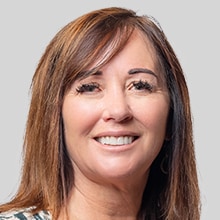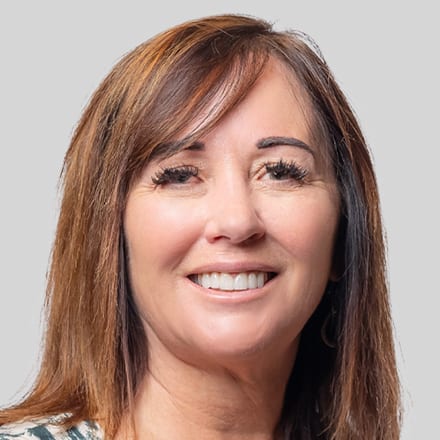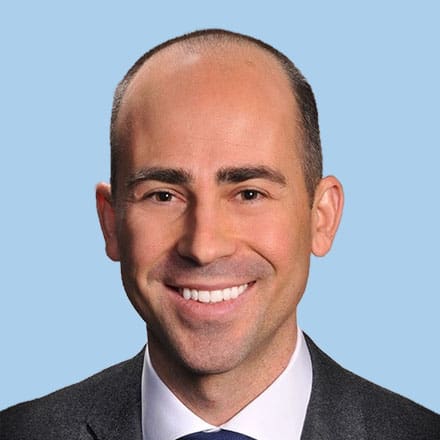Inside Angle
From 3M Health Information Systems
How health systems can leverage technology to improve the physician and patient experience
I sat down with Dr. Travis Bias, family medicine physician and medical director of clinician solutions at 3M Health Information Systems, to discuss his recent article tackling physician burnout, and how technology can improve patient and physician experience.
Keri: I recently read your interview in Becker’s Hospital Review, “The gift of time: How health systems can leverage technology to improve they physician and the patient experience.” You had some great comments and examples regarding the overwhelming time constraints faced by health care workers. I wanted to expand on your comments, and get your expertise on the four areas you noted in the article:
- Artificial intelligence (AI)-driven solutions can help physicians document the right thing at the right time.
- Clinicians are more likely to accept new tools when they understand the “how” and “why” behind them.
- Leading health systems build clinical documentation in a consistent way across care settings.
- Computer-assisted physician documentation captures conditions, while reducing clinicians’ clerical burden.
We’ve heard how clinician burnout has increased over the years. I recently saw a statistic from the Agency for Healthcare Research and Quality (AHRQ) suggesting burnout now impacts more than 50 percent of physicians. We also know documentation, among other administrative tasks, can be burdensome for a physician and at times incomplete because the physician is rightfully focused on the patient and patient care.
Your article discusses how AI-driven automation provides the physician with the right information at the right time, also changing how physicians interact with the documentation process. Specifically, you noted the goal of respecting the way physicians organize their thinking. You also mentioned the need for AI-driven nudges that are tailored in content and frequency according to specialty. Do you think providing this level of specificity will encourage more physicians to use AI technologies? And in your experience, how does AI help with “burnout?”
Travis: The bottom line is that physicians will be open to leveraging AI and really any technology, as long as they see it makes their work easier to accomplish and improves their patients’ outcomes. Similarly, we need to be able to trust in the underlying algorithms or processes that power these new capabilities. If those modalities are properly tested and proven to work well, physicians will be more than happy to adopt them if it will help improve their workday. Using AI, and in our case natural language understanding (NLU), physicians can be prompted in an unobtrusive and efficient manner to capture complete documentation to ensure their patient population gets the care and resources they need.
Keri: Next, you detailed how clinicians are more likely to accept tools when they know the “how” and the “why” behind the tool. Physicians are already busy and may be somewhat reluctant to take on more training. What do you think has been the most effective way to engage physicians so they have a good understanding of the “why?”
Travis: Take for example getting a new iPhone. When I get a new iPhone, it does not come with an instruction manual. That’s because it doesn’t need to. The iPhone is so user-friendly, even those who are not tech-savvy can turn on the phone and start downloading and using the applications on their new phone. That ought to be the goal for new health care technologies, especially after the last two decades of electronic health record (EHR) headaches for physicians. Beyond minimizing the training for new health technologies, it must be clear how any new tool is going to make their work more effective. That begins with understanding frontline clinicians’ goals.
One physician group may be interested in capturing their populations’ complexity for value-based payments, while another group may be dialed in to how they can improve the baseline, or “expected,” values for their quality outcomes measures. Their immediate leaders will understand this best, so soliciting their input and assistance with implementing and rolling out new technologies is critical. Improving clinical documentation ensures proper communication between clinicians, strengthens population complexity capture to ensure those patients get adequate resources to support their care, and it bolsters the integrity of health information available to our health system thus bolstering quality measure comparisons between providers.
Keri: Consistent clinical documentation across care settings seems more achievable now than it did pre-EHRs, especially with the awareness of and focus on social determinants. Have you seen more organizations investing in processes surrounding clinical documentation?
Travis: Organizations are definitely more focused on capturing complete documentation, for a variety of reasons I mentioned above. Some are building out physician advisor programs to extend the clinical documentation integrity (CDI) teams, while others are looking for technology to augment CDI teams’ work. Technology can especially help in instances where a human CDI reviewer may not get a chance to address a hospital admission, in the event of a shorter length-of-stay for example. The EHR is helping gather and share more complete information, and the next step – as you mentioned – is capturing a more complete social risk picture for a patient population. The more clinicians can add to this valuable data set, the better health care payment and even social policies can address a population’s unique needs.
Keri: Lastly, the adoption of technology such as nudges within the physician’s workflow can be a game changer if it is tailored and impactful, and not just additional noise. From your experience, how can advancements in AI technology help alleviate burnout seen not only in physicians, but health care organizations in general?
Travis: Frontline clinicians deal with a number of notifications and disruptions throughout their workday, both from within the EHR and outside that environment. One way we can leverage technology is to surface relevant information at the right time and to prevent the need for rework.
For example, when I would see Medicare Advantage patients, I would get a piece of paper prior to the appointment in my physical inbox notifying me of hierarchical condition categories (HCCs) that might need to be re-captured this year. First of all, that information should be digital and presented when I enter the patients electronic chart, but secondly, what if we could leverage NLU and AI to read the narrative I type in my history of present illness section to suggest a new HCC in real time, the first time I’m in the patient’s chart? This seemingly small intervention would help me capture more detailed information about the patient for more appropriate capitated payment, but it could also simultaneously save me clicks on the mouse and prevent disruptions, and save valuable minutes of rework, days later when the payer asks me for more specific information about that patient. That’s just one small example of how we can build on the power of the latest technology to make a physician’s workday easier and more efficient, ideally on the path to mitigating drivers of burnout.
To learn more about how health systems can leverage technology to improve the physician and patient experience, read the full article with Dr. Travis Bias.
Keri Hunsaker is a marketing manager at 3M Health Information Systems.
Dr. Travis Bias is a Family Medicine physician and Medical Director of Clinician Solutions at 3M Health Information Systems.




